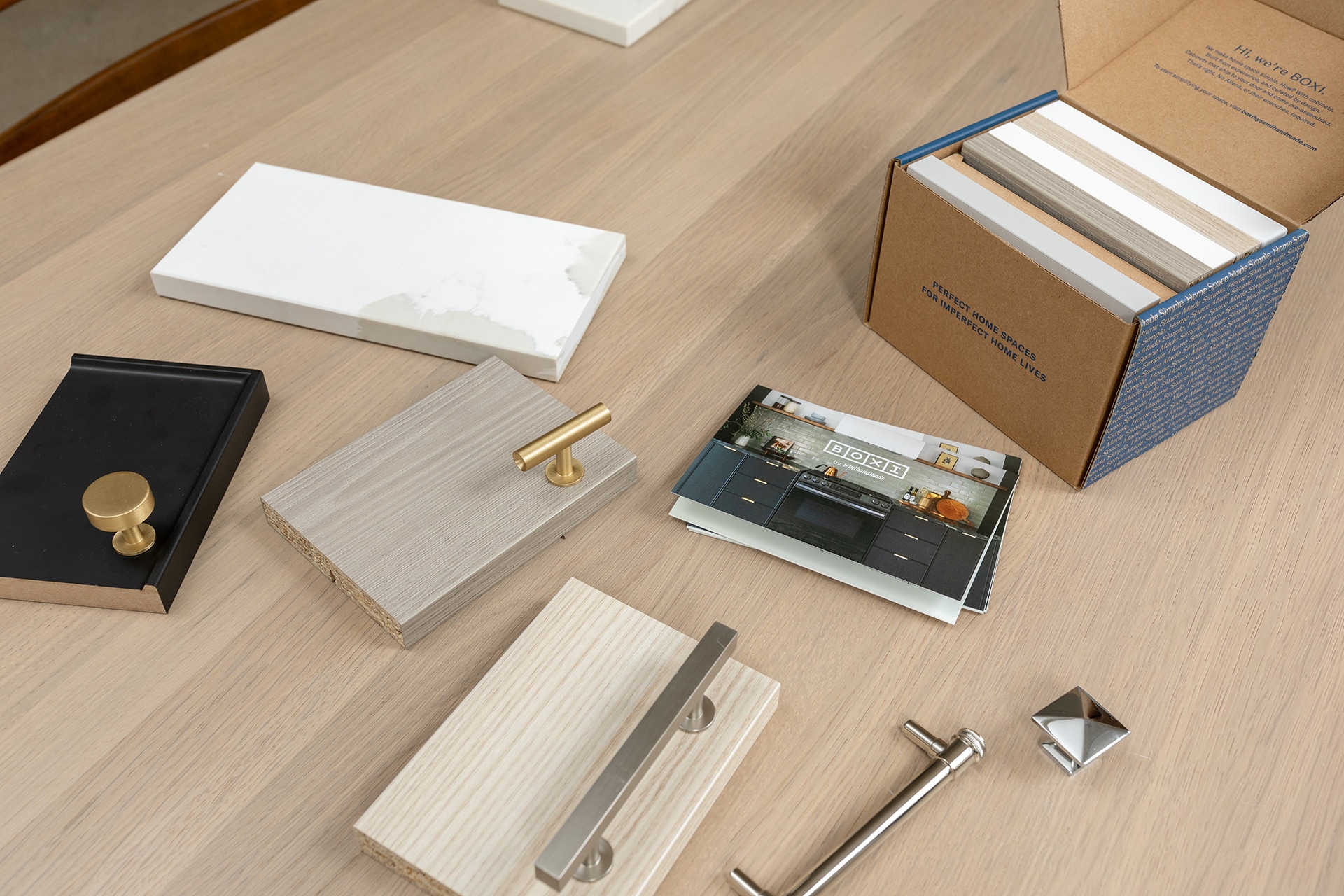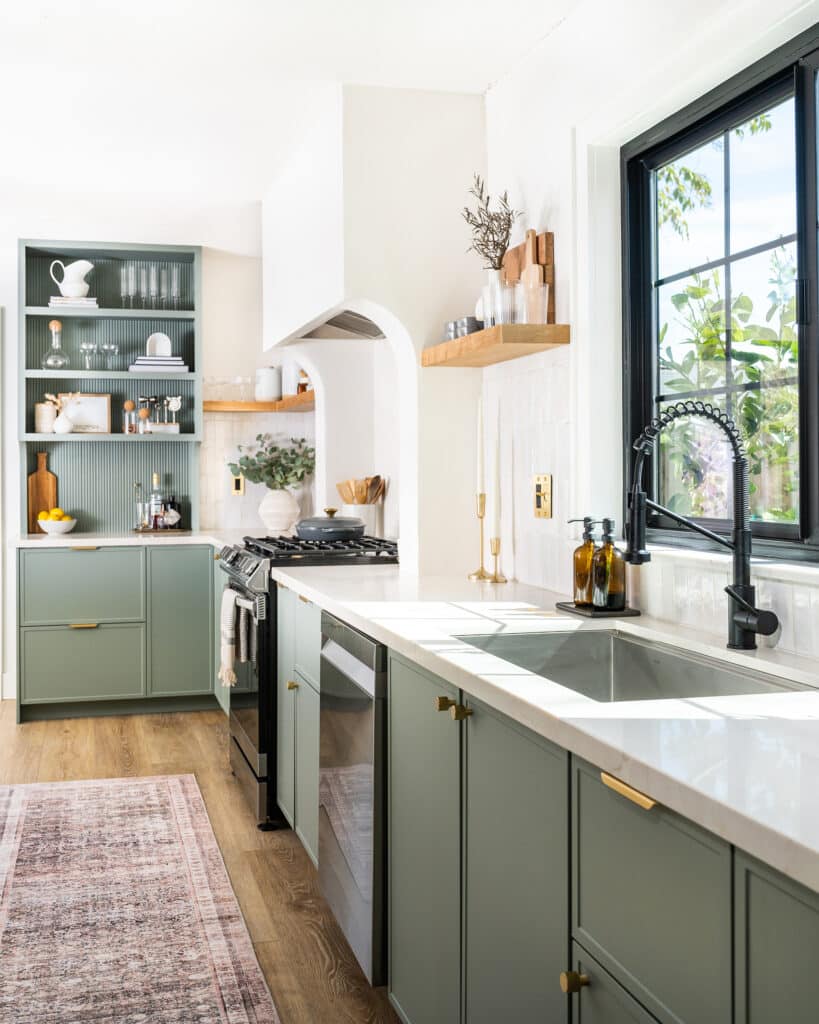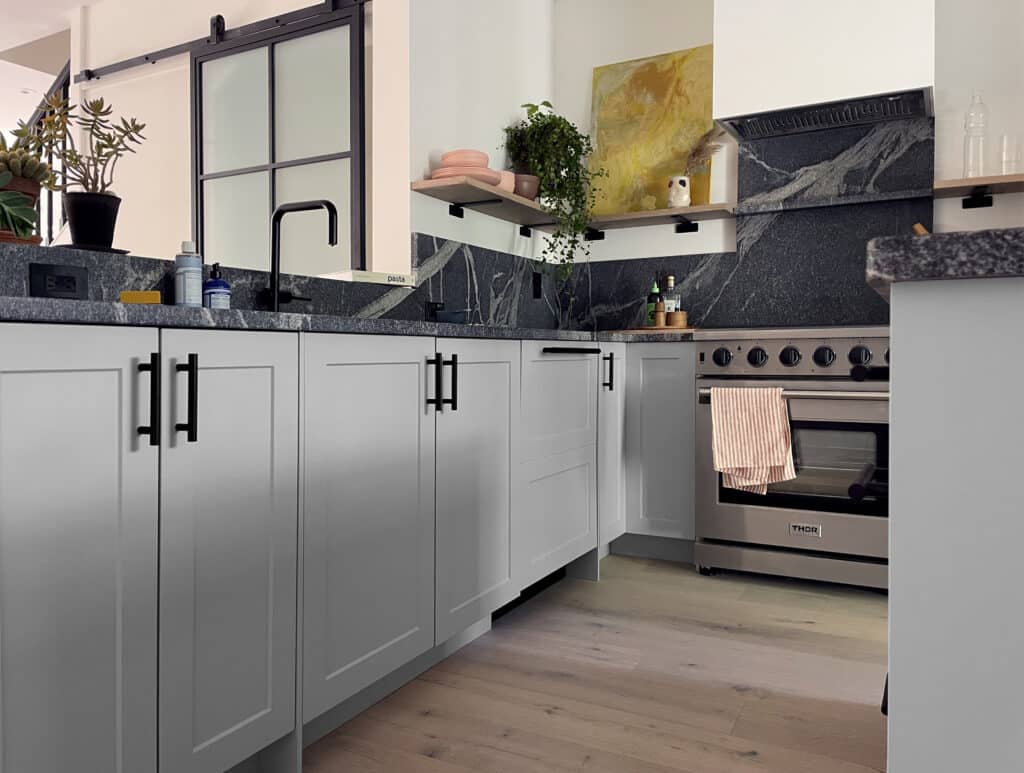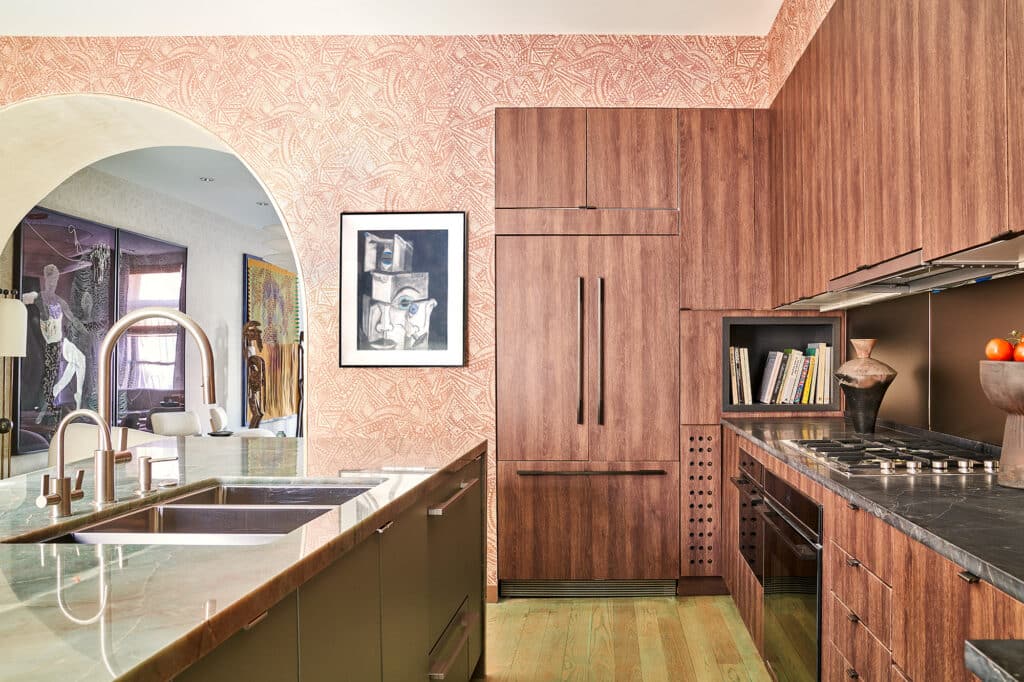You’ve spent hours, days, weeks, or months deliberating over what style of cabinet fronts to put in your kitchen and what color to paint them. Now, you’re left with one more decision that, while small, can make a drastic difference: What style of hardware to use.
The knobs and pulls you choose for your cabinets likely aren’t the biggest investment you’ll make in your kitchen, but they can have a considerable difference on how it looks. “When I moved into my house 10 years ago, it was all builder-grade,” says New England-based interior designer Shannon Tate-Giordano. “The first thing I did was paint the cabinets and change the hardware, and that changed everything.”
Ultimately, Tate-Giordano believes that hardware is a matter of personal preference—you shouldn’t feel too tied to any do’s or don’ts—but there are some general guidelines you can follow if you don’t even know where to start.
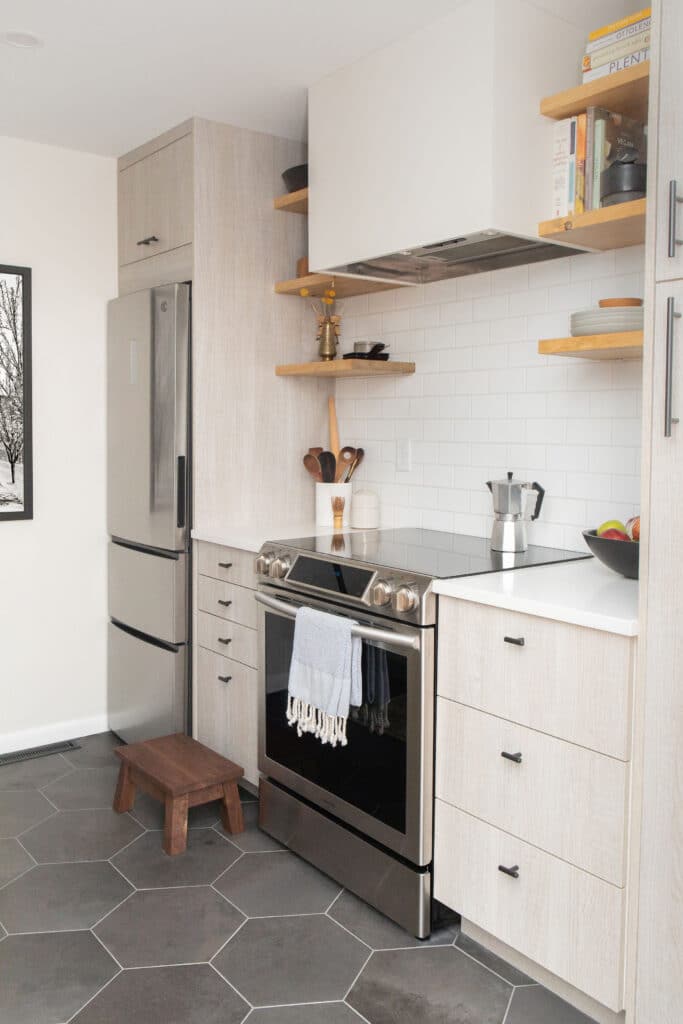
What Style of Hardware To Use
Your cabinet hardware should complement the style of your kitchen. In a very traditional kitchen, modern half-moon cabinet pulls might feel out of place, and in a sleek, contemporary space, more ornate knobs may feel a bit stuffy. For more traditional spaces, Tate-Giordano typically opts for rounded knobs and handles, while in modern kitchens, she welcomes more squared-off handles and tab pulls.
One thing to keep in mind: If you think you might want to swap your hardware down the line, try to stick with styles that don’t require any extra drilling. (Half moon pulls, for instance, typically require two holes, instead of one, so they’re not so easy to switch out.)
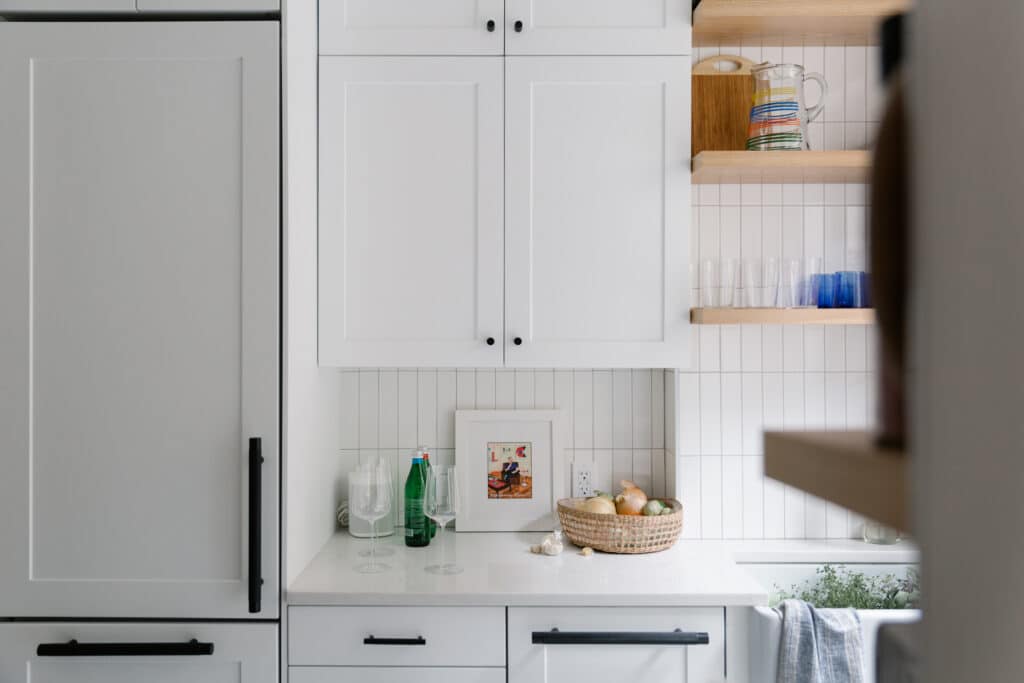
Quarterline fronts
Quarterline cabinet fronts read as more modern, and their style makes them well suited to be paired with more dramatic hardware options—though more minimal options can also translate to a chic, minimal look.
Beaded fronts
Because beaded cabinet fronts are more detailed than other options, like Shaker and slab, they tend to look best with pared back, rounded hardware.
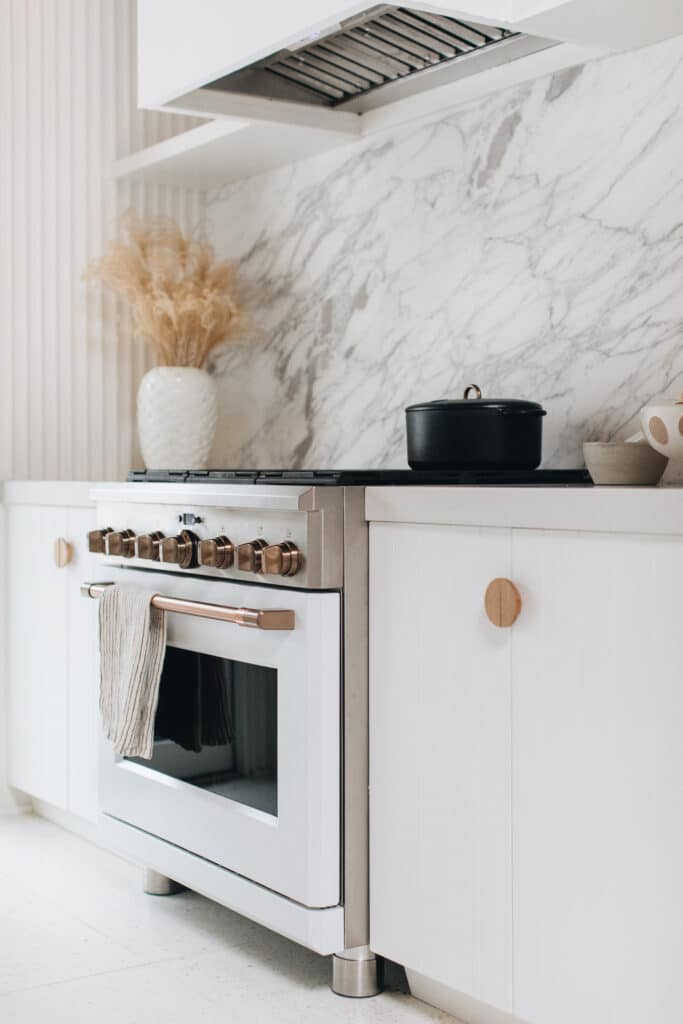
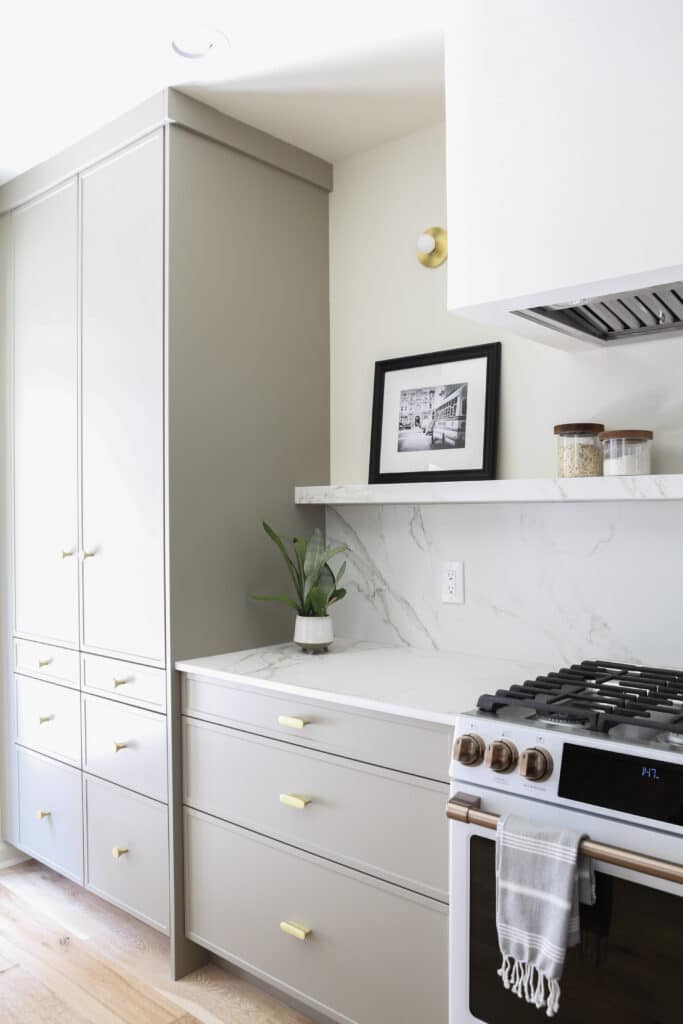
Shaker fronts
Shaker cabinet fronts are a popular option for a reason—they can translate to looking modern or traditional depending on the styling of the rest of the kitchen. This makes them a great option for more versatile cabinet hardware.
Slab fronts
Slab cabinet fronts tend to read as modern, and because they’re so simple, they can handle more striking or trendy hardware options.
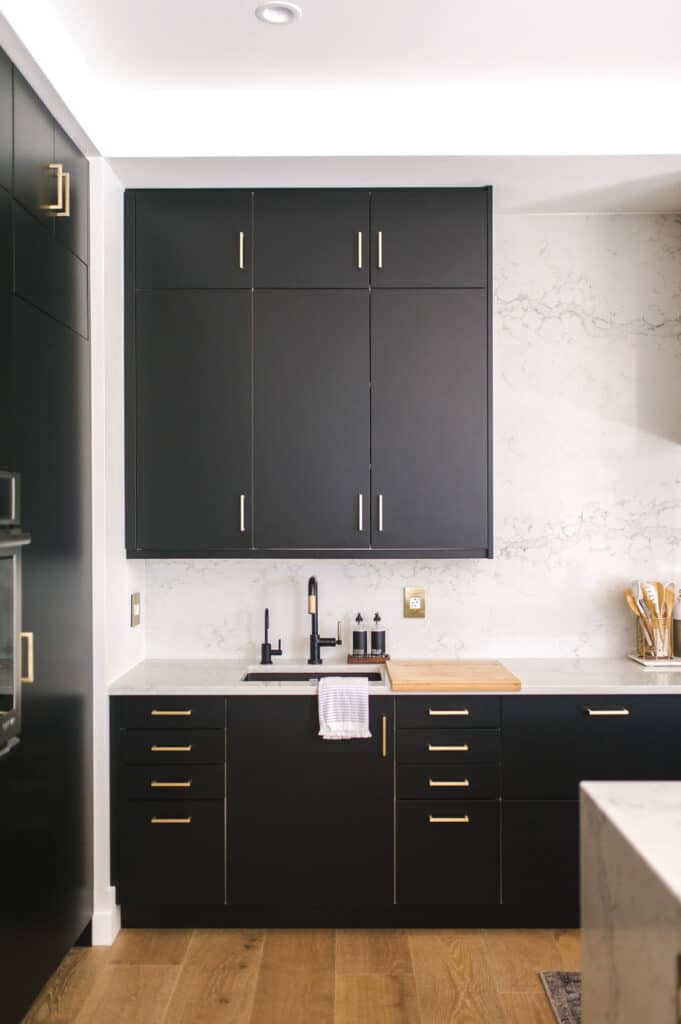
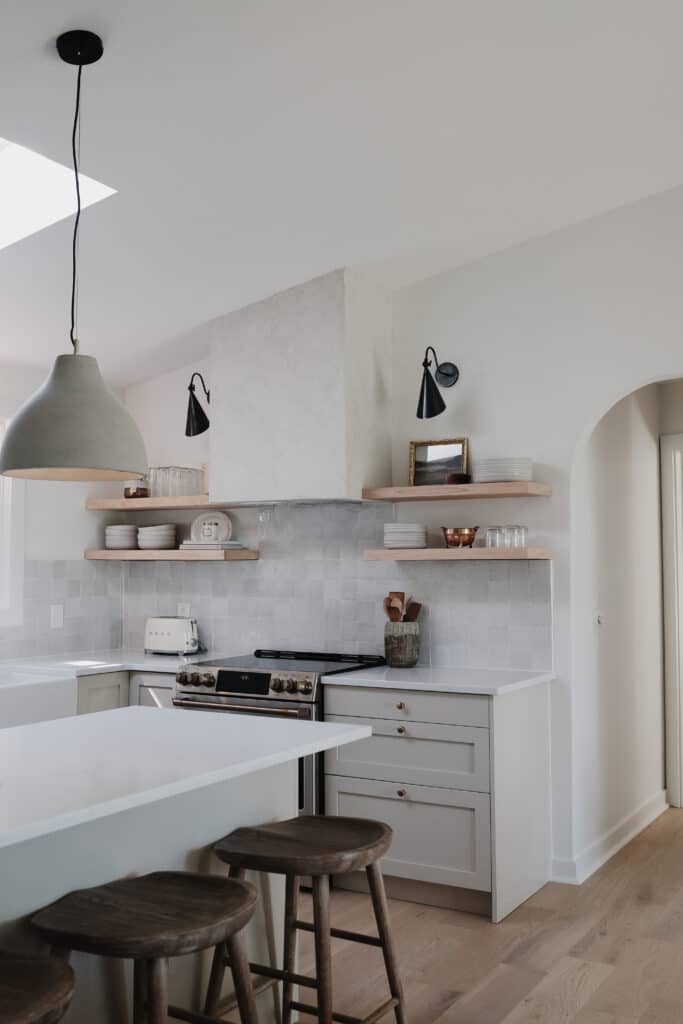
What Finish of Hardware To Use
Every person can have very different opinions on finished—some people swear by all things brass (Tate-Giordano is a fan) while others prefer silver-toned hardware (which the designer tends to shy away from, saying that nickel and chrome finishes can tend to look builder-grade).
Tate-Giordano recommends using unlacquered brass, so that it can age and develop a beautiful patina over time, for both modern and traditional kitchens, and she sometimes gravitates towards matte black hardware for contemporary spaces. If you’re unsure what will look right with your cabinet colors, order a few samples, and compare—nothing beats the eye. And don’t be afraid to go with an unconventional pick, if it looks great to you. “That’s what creates some interest,” says the designer.
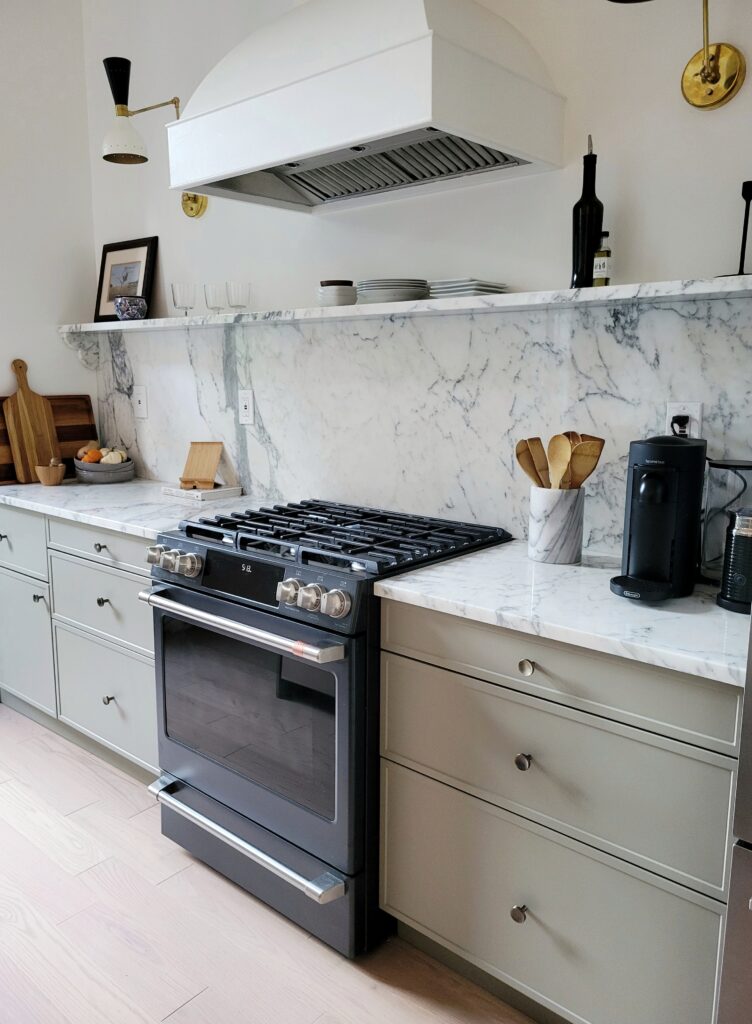
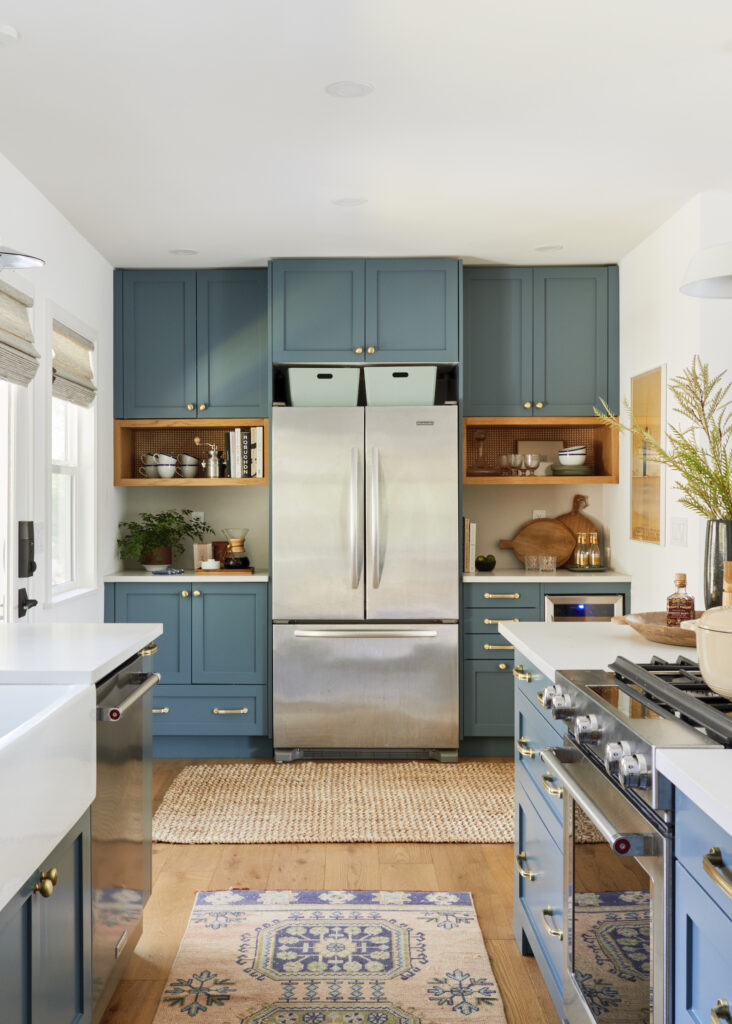
How To Tell If Your Hardware Choices Work
Tate-Giordano is a big proponent of using painters tape to mark out where pulls and knobs will go—that ensures you end up with the right size hardware, and you don’t end up overwhelming (or underwhelming) your cabinet fronts. She likes to judge placement and size by eye rather than following a specific guideline: If you’re comparing a 4-inch handle versus a 6-inch one, it can be helpful to see the difference laid out directly on the cabinet front.
Typically, Tate-Giordano gravitates to knobs for upper cabinets and pulls for lower ones, but it depends on client preference and kitchen layout. But she always makes sure that hardware throughout the space is a consistent finish: That ensures the kitchen looks cohesive.
At the end of the day, though, there are no strict rules. “People can get stuck feeling like they might make the wrong choice,” she says. “But there is no wrong choice—that’s the fun of it.”





